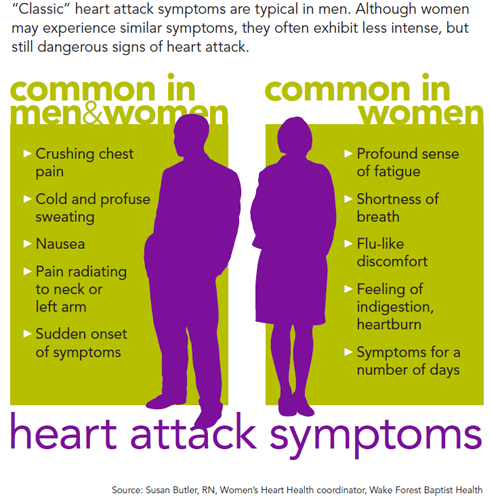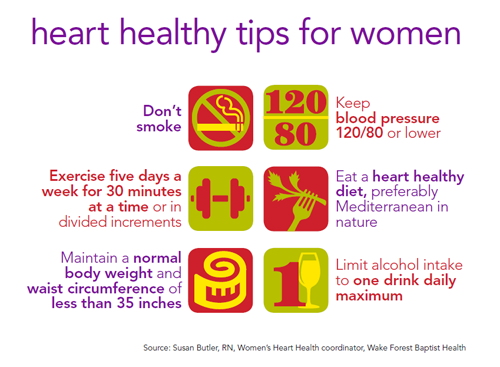Heart disease is thought of as a “man’s disease” but in the United States, heart disease remains the leading cause of death in women – ahead of all cancers, accident and stroke – killing more than 400,000 women a year.
Heart disease is a catch phrase for heart attacks, high blood pressure, peripheral vascular disease, stroke, or heart failure.
Heart attacks are particularly concerning for women because their symptoms tend to be different from men’s. Because women often do not recognize the symptoms of a heart attack, they can delay seeking care. According to the American Heart Association, fewer women than men survive their first heart attack.
Fortunately, public awareness of heart disease in women is improving as researchers unravel the differences in symptoms, treatment and survival of women compared to men. Unfortunately, in women, heart symptoms are often attributed to causes other than the cardiovascular system.
Women’s Heart Attack Symptoms
Rarely would a woman ignore a lump in her breast, and she shouldn’t. By the same token, she shouldn’t ignore the warning signs of heart attack.
We all know the classic heart attack symptoms, or think we do – that crushing, radiating chest pain combined, maybe, with nausea and a cold sweat. True, those are the common symptoms in men. But in women, the symptoms may be less dramatic:
- Pressure, squeezing or fullness in the center of the chest
- Indigestion or heartburn
- Pain in the arms, back, neck, jaw or stomach
- Shortness of breath
- Sudden excessive sweating
- Nausea
- Dizziness
- Fatigue
Because the symptoms can be much more subtle, women often ignore them. A woman may chalk up fatigue, mild chest pain and shortness of breath to a long, hard week. Who doesn’t feel tired some days? She may imagine that the sudden sweat is just another symptom of menopause or she may think that she’s being silly to call for help.

When to Call 911
If you're having heart attack symptoms, it's important to call 911 right away. Early treatment for a heart attack can save your life.
At Wake Forest Baptist Health a team of health care professionals use state-of-the-art equipment to diagnose your condition and take measures to help prevent further damage to your heart.
Preventing Heart Disease In Women
Your primary care physician will work with you to develop a prevention plan that takes into account your family history of heart disease and your current risk factors.
Know Your Numbers
Too often a woman has her annual exam, but does not understand the proper range for important numbers.
- Blood pressure should be less than 120/80
- Blood sugar should be less than 100
- A healthy BMI ranges from 18.5 to 24.9
- Total cholesterol should be less than 200
Heart-Healthy Lifestyle Changes
Your doctor may work with you to develop good lifestyle habits that promote heart health.
- Quit smoking. People talk about smoking and lung disease, but smoking is also a leading risk factor for heart disease because nicotine restricts blood vessels and puts pressure on the heart.
- Get moving. Adding physical activity to your life doesn’t require an expensive membership at a health club. Start with a 15-minute walk after dinner. Add 15 minutes in the morning before the kids get up. And set goals you can reach.
- Eat healthy. Focus on fruits and vegetables, whole grains and meals you prepare yourself.
- Monitor your weight. A 5-10% decrease in your weight can help lower blood pressure and blood sugar.
- Seek treatment for stress and depression.
- Limit alcohol to no more the one drink daily.

Talk to your doctor about warning signs and symptoms of a heart attack. Understanding your own risk factors is important. But also be aware of women’s unique heart attack symptoms and what to do if you experience them.
